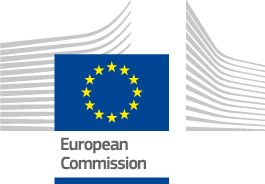
The European Union tried to address the inequalities in Ukraine with its Cohesion Policy since 2014. With Putin’s war and its consequences, the challenges get even harder. There is yet at least one positive effect to be hopeful about.
One thing was clear from the start. “It’s impossible to predict what the future in this war looks like”, said Davide Luca, Associate Professor University of Cambridge, considering the new attacks on Kiew from the Russian military only two days before.
On Wednesday, experts in regional development discussed the effects of Russia’s war in Ukraine on European’s Cohesion Policy during the European Week of Cities and Regions. Though Ukraine is not part of the EU, there have been a lot of investments made in several of its territories to improve the infrastructure and reduce bureaucracy since 2014 in the country. One example is the decentralization reform: 10.000 local councils were merged into 1469 municipalities to make life more convenient for local citizens.
But the invasion of Ukraine by Russia changed a lot. 7,65 Million people escaped the country as the killings and destruction of the cities wouldn’t stop. Most of them are economically active citizens, and nearly half of the people have a high level of education. This aggravates a problem that was already severe: demographic challenges and the lack of human resource capacity in the municipalities had an impact on the productivity level of the country. The aggression in the Donbas since 2014 and the subsequent difficult economic situation already caused people to leave the country years before. Now it got even worse.
And there’s more: the rural regions, which the cohesion policy is mainly addressing, also suffer from a higher risk of energy poverty in the ongoing gas crisis, as pointed out by Enrique Garcilazo, Deputy Head Division for Regional Development and Multilevel Governance. The European Union has to take a close look at the specializations of the Ukrainian regions and their needs. Especially in Eastern Ukraine, there are a lot of industries, yet the economical focus of the West is on agriculture. The war has different effects on each of the sectors, and since inequalities in the country were already high, cohesion policy must rethink some of its strategies.
At least, the war showed how big European solidarity can be. Ukrainian refugees got various rights, including access to healthcare, work, and the right to choose any EU country for residence. Governments can decide where to send the people in some countries, therefore rural areas of Central Europe were turned into new migration destinations. Maybe there is even a chance for these territories, in the horrible situation of the war: if these areas see non-EU nationals as an asset that can boost their development, refugees could get a chance to rebuild their life while economic, social and territorial disparities in the EU are being reduced.
The online panel named “Effects of Russia’s war in Ukraine on Regional Development Priorities” was composed of Maria-Varinia Michalun (Senior Analyst at the OECD), Vlad Mykhnenko (Associate Professor of Sustainable Urban Development & Research at Oxford), Serhii Svynarets (Researcher at IfL Leibniz Institute for Regional Geography), Enrique Garcilazo (Deputy Head Division for Regional Development and Multilevel Governance CFE/OECD) and was hosted by Davide Luca (Associate Professor University of Cambridge).
By Friedrich Steffes-lay
Edited by Clémence Maquet



